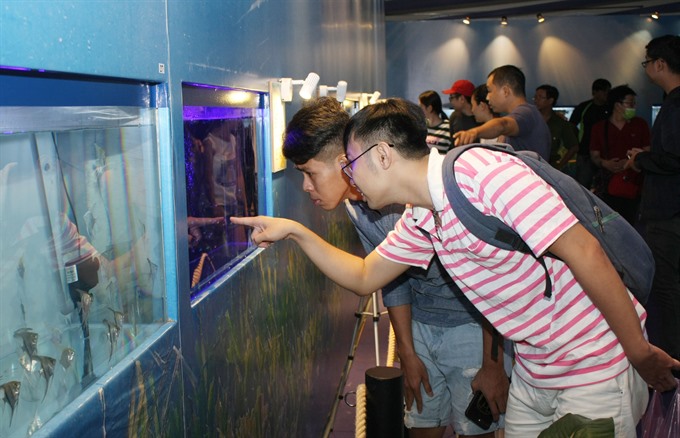 Economy
Economy

Ornamental fish farming is among the segments HCM City targets to develop with the aim of boosting the whole agricultural sector.
 |
| Visitors browse ornamental fish at a fair held in HCM City. — VNA/VNS Photo Tiến Lực |
HCM CITY — Ornamental fish farming is among the segments HCM City targets to develop with the aim of boosting the whole agricultural sector.
In the first nine months of this year, over 15 million fishes were exported for US$17 million, up 14 per cent and 15 per cent year-on-year, respectively.
In the last quarter, the city plans to export five million fishes for $6 million.
Exports have risen sharply since 2015 when only 13 million fishes were exported for $12 million.
Last year, at $18.2 million, they accounted for 13.2 per cent of the city’s total agricultural exports.
The municipal Department of Agriculture and Rural Development reported there are about 290 farms breeding the fishes on a total area of 88.9ha.
They raise 60 freshwater fishes, including 40 hybrid varieties.
Thời Báo Kinh Tế Việt Nam (Vietnam Economic Times) newspaper reported that 21 city companies export ornamental fishes by air, the biggest being Sài Gòn Ornamental Fish Joint Stock Company.
They export to 43 countries and territories, with the EU being the biggest market, buying slightly more than half of all exports.
To develop the industry, the city has undertaken many programmes, including setting up a model under which participating companies have to properly manage their breeding.
They have to comply with requirements for controlling risks, preventing fishes from contracting diseases, reducing the impacts of climatic conditions, and improving their fish-raising skills .
Thanks to this, the breeders have been able to improve quality, raising the profile of the Vietnamese ornamental fish industry.
As of June, seven farms had joined the programme.
But the industry also faces certain challenges.
The fishes bred in the city are small in size and most farms lack proper infrastructure and raise the fishes using traditional techniques.
A lack of research activities means there are no unique products introduced to the market. — VNS